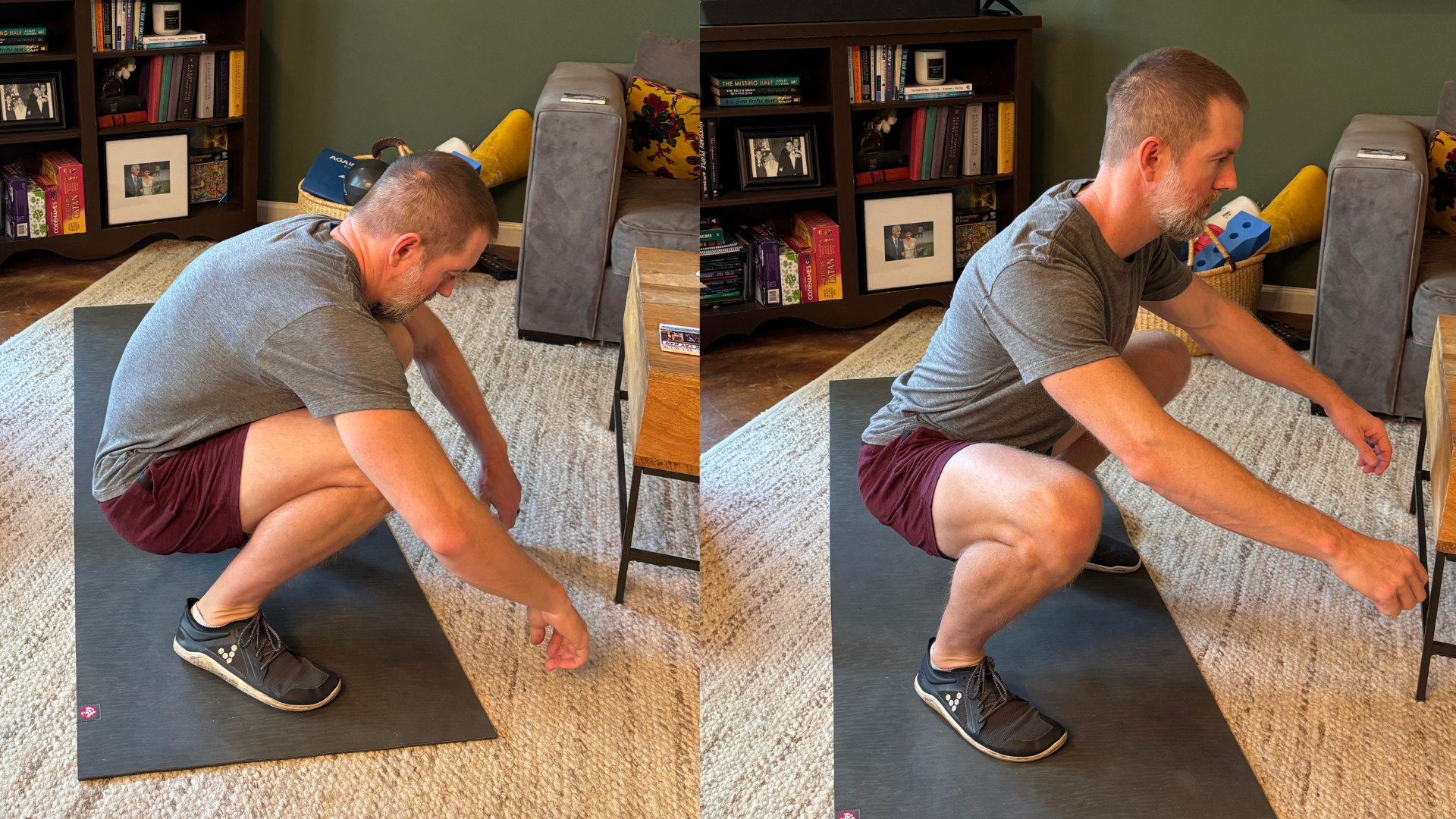Workouts Don't Produce Results, They Produce a Stimulus
Written by Kyle Ligon - MovementLink.FIT Head Coach
Surprising to most, your workouts are only part of the equation that determines the amount of changes that result from your workouts.
“Did you know that a sedentary lifestyle can create metabolic issues even in those who meet physical activity recommendations? ”
By integrating healthy habits, you’ll not only be healthier, but you’ll maximize your body’s ability to recover and adapt from your workouts, which in turn, will boost the results you’ll get in a compounded way. Many stages of most people’s fitness journeys involve the misconception that more is better when it comes to working out. The reality is that there is a range of stress from working out from which our bodies can effectively recover and adapt. Too little stress and our body won’t be challenged enough to elicit any changes. But, too much stress and our body will not have adequate resources to recover in time to continue training effectively on upcoming days. The MovementLink Method involves structuring workouts within an effective range above a Minimal Effective Volume (MEV) and below a Maximal Recoverable Volume (MRV).
There is an upgrade way of thinking that makes room for a smarter workout program and promotes healthier decisions while producing much better results. Workouts don’t create results, they create fatigue and a stress stimulus. From that, our body recovers and adapts to better handle the stress in the future.
Stimulus, Recover, Adapt (SRA) - For every movement, energy system, and volume and intensity combination, there exists a theoretical SRA curve. The MovementLink program optimizes the interactions of the SRA curves generated from our workouts within the scope of the bigger picture. This way, we can allow one area to recover and adapt maximally, while still training other areas.
Stimulus - Recovery - Adaptation
SRA Curve #1
Let’s look at the general SRA Curve above. The horizontal black line represents our starting level of fitness with the y-axis being our overall fitness level and the x-axis representing time. A workout will produce a stimulus, shown by the red line curving downward. Think about it this way: Let’s say we go to the gym and warm-up and then do one of two things. We either test our fitness or we complete a challenging workout and then test our fitness. If we tested your fitness, it would be at the horizontal black line. But, if we worked out and then tested our fitness afterwards, the fatigue from workout would create a short term decrease in fitness, represented by the red line’s distance below the original line. We are actually less fit in the short-term because of our workouts. This is why the red stimulus curve is downward. But, once we recover from the workout, the goal is that our fitness hopefully improves. If our workouts are appropriate, we will recover back to our original level and adapt beyond. Our goal in our scientific approach to programming is to optimize the stimulus to set up maximal adaptation curves.
SRA Curve #2 - Too Little Stimulus
SRA Curve #3 - Too Much Stimulus
Let’s look at two more scenarios represented in the images above. There is an optimal amount of work from which we can recover and adapt maximally. In the SRA Curves #2 and #3 above, the dotted lines represent optimal stimulus. SRA Curve #2 shows that if we don’t work out hard enough (solid red line), we may still see improvements, but that the total adaptation we get is sub-optimal. But, more is not always better. In SRA Curve #3, if we workout more than our bodies can effectively recover from (the solid red line) then the adaptation we get from that scenario is also sub-optimal. This is an interesting scenario as each rep you do beyond what you can efficiently recover from actually is working to get you less results. One more rep is not always better. In both of these, the too little and the too much scenarios, we can still make progress, but it’s not maximal. This is the more is better trap. Someone starts to add more and more to their workouts and may even continue to improve for a while, but they don’t realize that they are not improving as much as they would be if they did less. In MovementLink programming, we are careful to elicit the response we are looking for for that workout’s place in the cycle to maximize adaptations.
If you want to dig deeper into how exactly we dial in how much work is optimal in our workouts, you can check out our Workout Programming Big Picture. But, even when workouts are optimized in this way, the results you will get from your workouts are highly dependent on your body’s ability to recover, which basically comes down to your health and your lifestyle. Let’s look at what working out is actually doing:
This is why professional athletes spend so much time trying to enhance their recovery.
They understand that when their recovery is boosted, not only are they getting more results out of their prior efforts, but they are more rested and ready for their next workouts. They can use this increase in recovery to either add more training or add more intensity to their training. Again, think back to powerlifters who do strength training and then do cross-training to improve their strength training performance (Article: Why Cross-Training). Recovery works in the same way boosting your performance in each your workouts, further boosting results. For us at MovementLink.FIT, because we want to limit the amount of time we spend working out to a reasonable amount, instead of using our boosted recovery to add training time, we focus on using it to add more intensity to the workouts we are already doing, further improve our results. Improving your ability to recover is like earning compounding interest on investments, where the interest you earn starts itself earning interest and on and on. This seemingly small difference in performance due to enhanced recovery, workout after workout, compounds into enormous results compared to what you would have accomplished with the exact same workouts, but without boosted recovery. This is why most of our newer gym members find it hard to believe that the coaches who have gotten incredible results don’t workout more than they do. We follow the same workout plan they do, but we are generally better than most of them at recovering from workouts, which compounds into greater and greater results.
Here’s where I think it gets really cool…
The methods that we would use to maximally boost recovery are also the methods we would use to optimize health.
Yet again, we see that we don’t have to choose between being bad asses right now or being healthy and fit in the future! And, if we think about it, it makes perfect sense: A healthy body that is fueled properly and is running efficiently has the highest ability to rebuild itself and adapt from stress stimuli. The healthier we are, the more that health compounds into more health and performance.
I have noticed that, minus the potential use of performance enhancing drugs in elite athletic communities, the same lifestyle strategies that the best athletes in the world employ to prioritize recovery, which in turn produces maximal results from their workouts, are actually the same strategies that many health experts recommend to everyday people simply looking to optimize health and longevity. Choosing one of many examples, the health impacts of taking short walks after meals can be profound, but we also find this habit to be religiously implemented by some world-class Strongman athletes and Tour De France cyclists alike. Even in the middle of the Tour De France, a grueling three weeks straight of 100+ mile bike races where fatigue management and sleep is at a premium, athletes will go for short walks after dinner. There is magic here. Just because the MovementLink Method is health-centered with a long-term view, that does not mean that we are not going to get incredible short-term results. When our body is fueled properly, when vitamins, minerals, and hormones are available in the right levels, when inflammation and insulin levels are appropriate, when our heart is powerful and efficient, and as all markers that measure health improve, our body’s ability to respond and adapt to exercise improves, making results dramatic and fast.
So, what are the specific things we can do to boost our recovery (which is saying the same things as boosting our health), help us lose body fat, gain muscle, keep our joints and tissues happy, balances our hormones, and helps us live a long and happy life?












